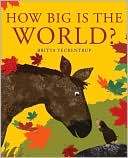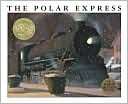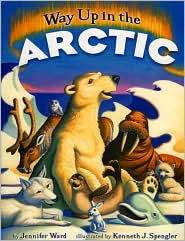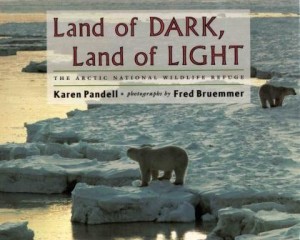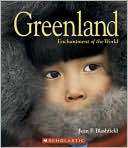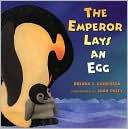The Virtual Bookshelf provides a list of recommended children’s books that reflect the theme of the issue and offers ideas on how to integrate them across the curriculum.
Linking science instruction to children’s literature has become increasingly popular in recent years for a variety of reasons: the literature connection motivates students, provokes interest, helps students connect scientific ideas to their personal experiences, accommodates children with different learning styles, and promotes critical thinking. Whatever the reason, we know that books about science can capture even the most reluctant readers and writers. Students are naturally drawn to the colorful photographs and layouts of nonfiction science texts.
Using science books allow teachers to meet their reading and writing goals while filling a need to teach more science. Teachers can use books as a starting point for meaningful classroom discussions; some teachers even begin class by reading a poem or a picture book aloud, simply for the enjoyment of the literature. Some teachers project the book onto a screen so the class can read the text together. Picture books make wonderful writing prompts and can provoke good journal writing. Interdisciplinary thematic units can be broadened by use of children’s literature.
The titles listed in this month’s bookshelf reflect our focus on a sense of place about the polar regions. We’ve divided the titles into five categories. The first category, Going Places, includes books where animals and people are going on a journey. The next section provides books that will help students Compare and Contrast the two polar regions. The third and fourth categories provide general reference books on the Arctic Region and Antarctica. And because the name of the project is Beyond Penguins and Polar Bears, we had to highlight two of our favorite books on Penguins and Polar Bears.
Going Places
The three titles in this category are not related to a specific polar region. Instead, they could be used as a springboard to the idea of journeys to distant places. Use these titles before teaching beginning map skills as described in our blog post Mapping the Polar Regions, or follow a discussion of travel with the Science and Literacy activity A Vacation to the Polar Regions.
Arctic Region and Antarctica – Compare and Contrast
The titles in this section provide elementary students with an opportunity to identify similarities and differences between the Arctic and Antarctica. Students can use the content from these books to complete graphic organizers such as a Venn Diagram or table. The books can also be used to develop the content knowledge needed in our highlighted Science and Literacy lessons and activities. The two informational articles introduce students to compare/contrast text structure, discussed in a ReadWriteThink lesson.
 |
“The Arctic and Antarctica: Are They the Same or Different?” 2008. Jessica Fries-Gaither. This informational article, written in compare/contrast format, provides a 1-2 page opportunity for students to read and learn about the two polar regions. Two versions are available for each grade level: text only, or a foldable book. The grades 1-2 version has a Flesch-Kincaid Reading Level of 2.4, and the grades 3-5 version has a 4.7. Notes for assembling the books: You can put these books together a couple of different ways. You can print out the pages, cut them in half and then order the pages back to front. Fold the stack in half and then staple the spine of the book. Pairs of pages can then be stapled or glued along the right edge. You can also assemble the books as a foldable book. To assemble the book this way, follow the directions for your desired grade level. Grades 1-2: Print the two pages and align the document pages so that the following book page numbers are in the lower right-hand corner: front page and page 4. (The cover page should be on top and page 4 on the bottom). Set your copier to copy single pages into double pages and run the two pages in the order specified. Cut along the dotted line in the center of the double-sided page, place the book pages in order, fold, and staple along the spine. Grades 3-5: Print the four pages and align the document pages so that the following book page numbers are in the lower right-hand corner: front page, page 6, page 2, and page 4. (The cover page should be on top and page 4 on the bottom). Set your copier to copy single pages into double pages and run the four pages in the order specified. Cut along the dotted line in the center of the two double-sided pages, place the book pages in order, fold, and staple along the spine.
Content Clips is an interactive web environment designed to help K-12 teachers supplement their curriculum with compelling online resources and activities. By creating a free account, you can save resources and activities (such as the electronic books) to your own collection. You can also create your own interactive activities to use in your classroom. If you follow the links to the electronic books listed above, you will enter the site as a guest and will not be able to save them to your own collection. If you wish to save these stories in your own collection, create an account, login, and then search for “The Arctic and Antarctica: Are They the Same, or Different?” |
||||||
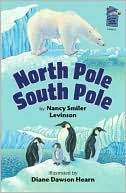 |
North Pole South Pole. Nancy Smiler Levinson. 2002. Picture book. Recommended ages: K-grade 2. Beginning readers can find a clear and concise discussion of the differences between the poles in this introduction to the geography, climate, and inhabitants of the top and the bottom of our world. |
||||||
 |
Life on the Ice. Susan E. Goodman. 2006. Picture book. Recommended ages: grades 3-5. The photographs in the book take readers on a tour of the world’s ice landscapes, primarily Antarctica. The pages are filled with large photographs; the text is in large black type on a white background; and sidebars are set in blue ink. The book discusses the nature of the extreme climate, the planes that fly there, the scientists who study it, and what it takes to live in this environment. |
||||||
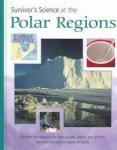 |
Survivor’s Science at the Polar Regions. Peter D. Riley. 2005. Nonfiction book. Recommended ages: grades 3-5. This book compares and contrasts the polar regions in terms of weather; clothes you would need to wear; plants and animals; ice, water, and snow; travel; and seasons. Each topic includes a hands-on activity suitable for use in a classroom or as at-home enrichment. The book includes a glossary and an index. |
Arctic Region- General Reference
The five titles highlighted in this section examine the Arctic in more depth. Use these titles to complete the Arctic column of this graphic organizer. (pdf file)
Antarctica – General Reference
The four titles highlighted in this section examine Antarctica in more depth. Use these titles to complete the Antarctica column of this graphic organizer. (pdf file)
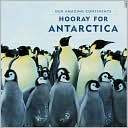 |
Our Amazing Continents: Hooray for Antarctica! April Pulley Sayre. 2003. Picture book. Recommended ages: K-grade 2. This book uses photographs to introduce the continent of Antarctica, looking at its geography, plant and animal life, weather, and human exploration. While the simple, concise main ideas make this appealing to primary graders, the additional detail found on most pages makes this book appropriate for students in upper-elementary as well. |
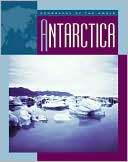 |
Antarctica: Geography of the World. Dana Meachen Rau. 2004. Nonfiction chapter book. Recommended ages: grades 3-5. This chapter book introduces the geography, topography, climate, flora, and fauna of the continent of Antarctica. The expository text is similar in style to what is found in an elementary textbook, but the pictures and the spacing of the text make this more engaging. Each chapter begins with a question, making this book an excellent opportunity to practice questioning strategies such as SQ3R. |
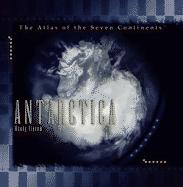 |
Antarctica: The Atlas of the Seven Continents. Wendy Vierow. 2004. Nonfiction book. Recommended ages: grades 3-5. Each two-page spread of this nonfiction book discusses a discrete topic about Antarctica. The book contains a large number of maps and atlas projections with explanations of the history of the continent, the climate, plants and animals, the natural resources, and the history of exploration. Also included are a glossary and an index. The paragraphed, expository-style text could provide an introduction to research projects, organizing information, and expository writing. The ability to project text on a screen could make this book more accessible for whole-class use. |
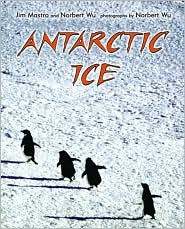 |
Antarctic Ice. Jim Mastro and Norbert Wu. 2003. Nonfiction picture book. Recommended ages: grades 3-5. Color photographs and paragraphed, expository text describe the marine life of Antarctica throughout the changing seasons. The book’s authors include the microscopic phytoplankton and other marine organisms that are often overlooked in favor of penguins, whales, and seals. |
Penguins and Polar Bears
While most appropriate for primary grade students, all elementary students would enjoy these books about the polar regions’ most popular animals.
This article was written by Kimberly Lightle, Jessica Fries-Gaither, and Nancy Brannon. For more information, see the Contributors page. Email Kimberly Lightle, Principal Investigator, with any questions about the content of this site.
Copyright March 2008 – The Ohio State University. This material is based upon work supported by the National Science Foundation under Grant No. 0733024. Any opinions, findings, and conclusions or recommendations expressed in this material are those of the author(s) and do not necessarily reflect the views of the National Science Foundation. This work is licensed under an Attribution-ShareAlike 3.0 Unported Creative Commons license

